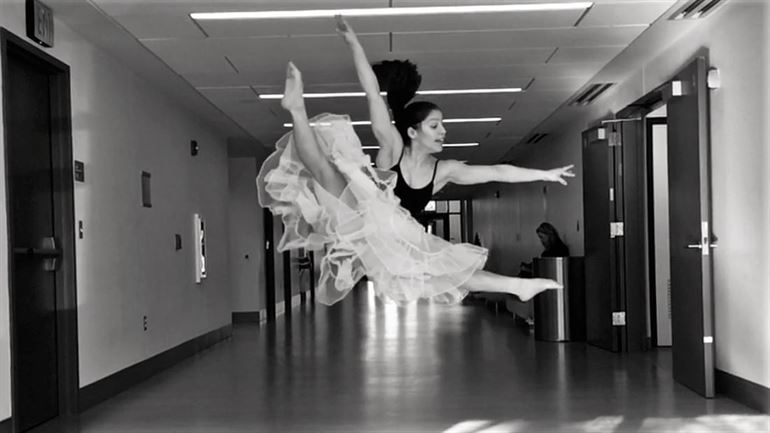To be immersed in a different world – the feeling, the release, the freedom and the beauty – that’s the gift of dance.
Ana Lourdes Novoa graduated from La Escuela Nacional de Arte in Havana, Cuba. Novoa graduated from Escuela Nacional De Arte and became Prima Ballerina of the English National Ballet and soloist of the Cuban National Ballet. She had the opportunity to dance all the roles in all of the ballets. She is now teaching in the Manhattan, New York City and New Jersey areas.
“I wanted to start teaching here in New York because my friend Caridad Martinez was already here at Ballet Hispánico,” Novoa said. “She danced with me in the company, and she brought the level of the Cuban Methodology here. I wanted to transmit all my years of experience to the next generation.”

In the red dress, Ana Lourdes Novoa performs Don Quixote. Photo courtesy of Ana Lourdes Novoa
After the Cuban revolution in 1959, there were no diplomatic relations or embassy with people outside of Cuba. So, many Cubans immigrated to the United States and could not talk to or see family.
“The first tour in 1968, the Cuban National Ballet went to Paris. I remember 10 dancers in the company stayed in Paris and did not come back,” Novoa said. “Two came to America to teach. They brought stronger technique and competition.”
She believes Cuban dancers have a strong technique because they brought the best teachers from different countries, such as Russia and France, which also known for their styles in ballet to teach at the school. As a result of being taught all the different styles in one school, they were more diverse.
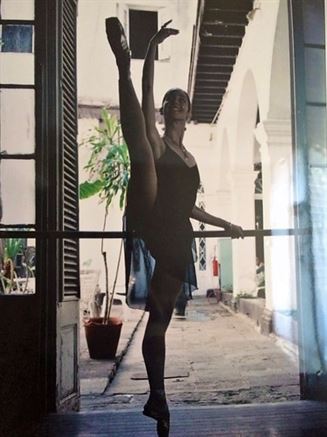
Ana Lourdes Novoa poses at the ballet barre in a develope position. Photo courtesy of Ana Lourdes Novoa
Anilce Scasso trained at the School of Ballet in Havana, Cuba and now adds the concept of the Cuban Methodology.
“The Cuban Ballet School was created with the acquisition and experiences of the best schools and methods in the world,” Scasso said. “Its creators focused on the Cuban method more, adapted to our dancers and to our socio-cultural environment.”
The Escuela Nacional Ballet De Cuba (The Cuban National Ballet School) in Havana, Cuba is the most prominent ballet school in the world with 3,000 students. Cuban ballet dancers are highly sought after for their talent, passion, strong technique and discipline.
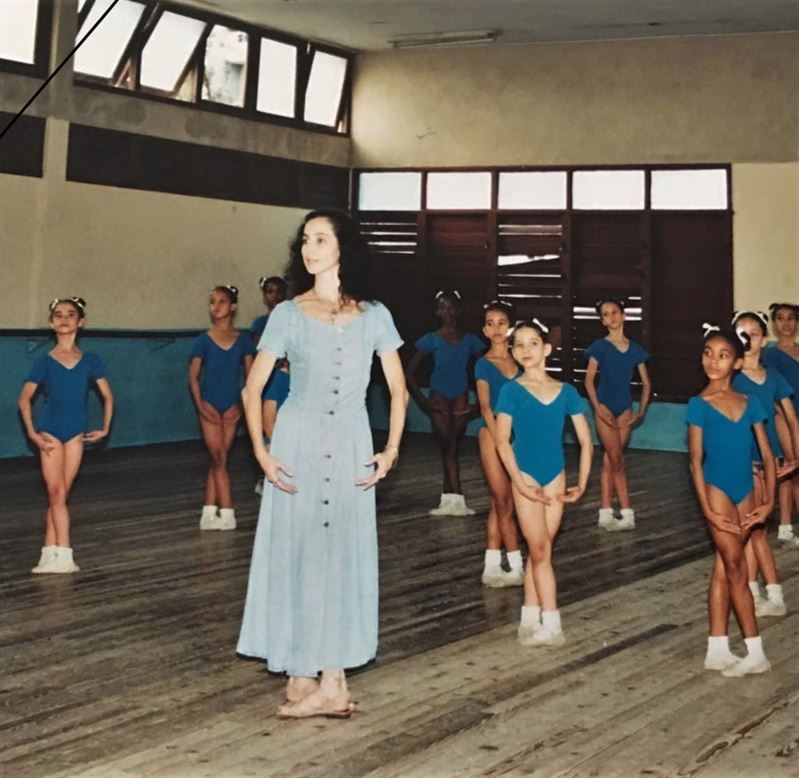
Ana Lordes Novoa teaches students at the Cuban Ballet School. Photo courtesy of Ana Lourdes Novoa
The students at the school train in ballet, modern and flamenco from as young as 8 years old to adulthood. The program lasts for eight years and acceptance is through audition only. This program also requires students to undergo a medical exam – to check if they have the facility of a dancer, a biometric exam and artistic and nutritional conditions. Students must partake in the ballet exams every year.
Former President Jimmy Carter reopened relations with Cuba in 1978, marking the first time that the Cuban National Ballet was able to perform in the U.S. Many teachers from Cuba began to share their knowledge of the Cuban Methodology.
Not only are Cuban dances being shared but many other styles and forms of dances from throughout Latin America are being passed down to the new generations. Passionate dance educators share the importance of spreading the values of heritage, community, histories and culture of Latin America.
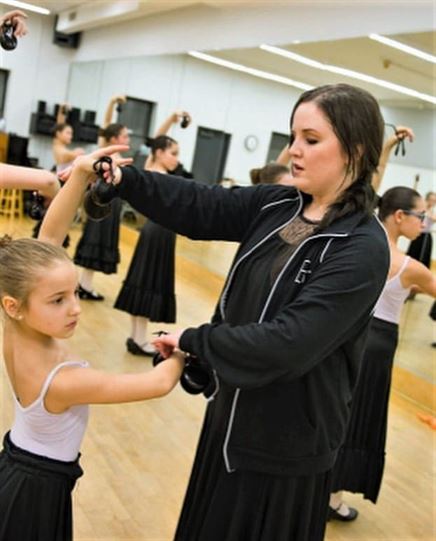
Kiri Avelar helps a young student with proper form in Flamenco class at Ballet Hispanico. Photo courtesy of Paula Lobo
“It’s important we share this because it keeps the culture alive,” said Kiri Avelar, associate school director of Ballet Hispánico.
Not all Latin American dances are the same. There are different styles, but they have an essential similarity in keeping the culture alive. Various places in Latin America have many different dances, including Puerto Rico, Mexico, Spain, the Dominican Republic, Colombia and Cuba. Basically, all of North, Central and South America is well-known for various styles. Flamenco, ballet, West African dance, Afro-Cuban, Afro-Caribbean and various social dances, such as salsa and Rumba, are some examples.
David Morgan, a professor at Montclair State University, believes it’s important for students to experience another country and its culture.
“There are movements, language, history. Aside from the basics of flexibility, muscle toning, spacial awareness and balance, it is so much fun,” Morgan said. “You will discover talents that you did not know you have.”
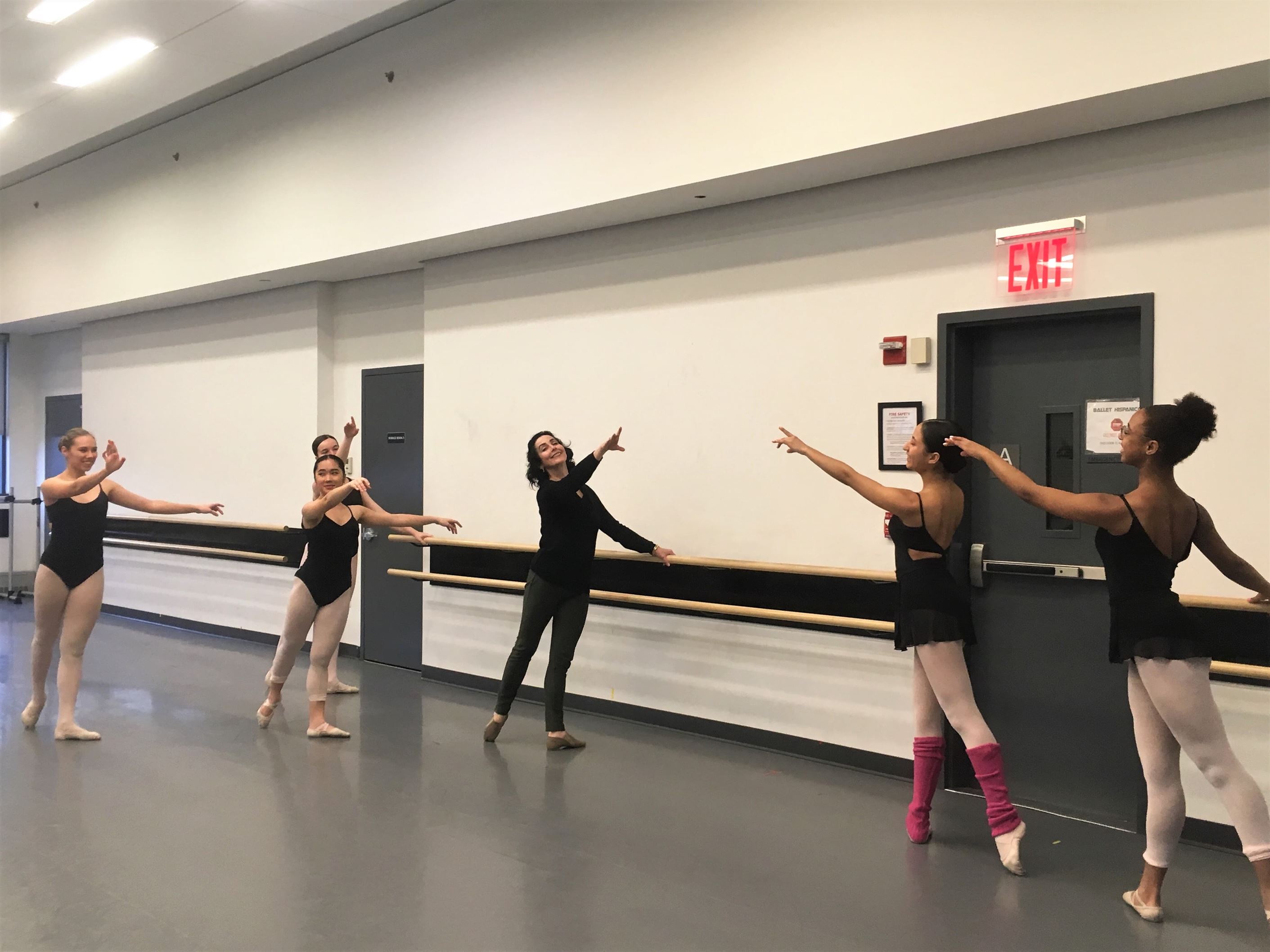
Ana Lourdes Novoa teaches the professional studies students at Ballet Hispánico. Teresa Gomez | The Montclarion
Morgan incorporates traditional movements in his world dance course on campus. He has been teaching Afro-Brazilian art of Capoeira with samba & maculele since 2002. Brazil is composed of a mix of African, Native and European people. All the cultural influences from the past 500 years combined includes African, Caribbean and Latin American. All those cultures add their traditions and their folkloric history.
Julissa Espino has been a student of the World Dance course and feels she has deepened her knowledge in various ways through dancing. The focus was mostly on Capoeira but the samba that was incorporated was an enjoyable experience for her and showed the celebration of life.
“It was fun and interesting. I like the dynamics, and I had a great experience,” Espino said. “Samba was incorporated, which was interesting. Being able to obtain more knowledge is great because now I know more about another country besides the one I grew up in.”
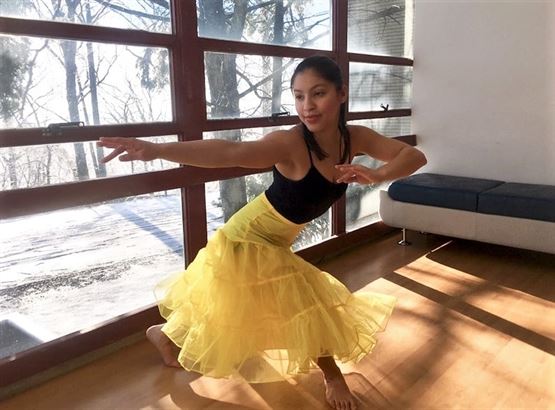
Julissa Espino, a dancer and physical education major, models a dance position inspired by African Dance. Teresa Gomez | The Montclarion
The values of learning heritage, history and community from Latin America through dance brings these traditions to the new generation while keeping the culture alive.

